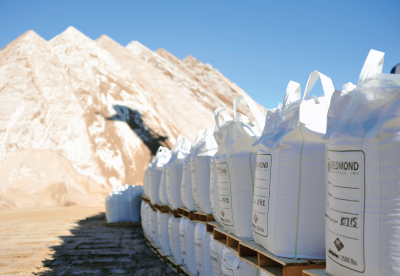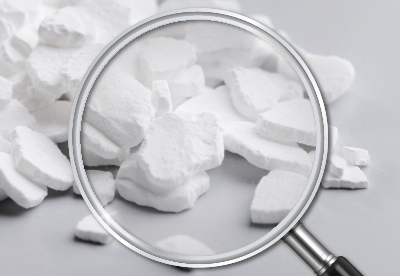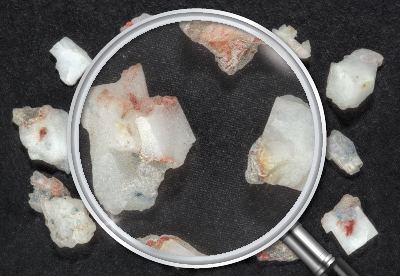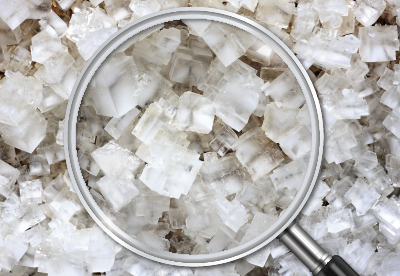Date November 22, 2022 | Brooke Loeffler
Chloride Spotlight: What is Magnesium Chloride?
Chemical Structure
Magnesium chloride contains 1 magnesium (2+) atom and 2 chlorine (1-) atoms.
This chemical structure makes it highly water soluble and produces a strong bond with those water molecules (see graphic below).
Magnesium Chloride Uses
Magnesium chloride is an incredibly versatile compound with many health, agricultural, and industrial uses.
Human / Animal Health
When used in the right doses, magnesium chloride is a helpful mineral supplement for animals and humans alike. It is an essential electrolyte that powers electrical impulses in our heart, muscles, central nervous system, and more. It is commonly prescribed to treat magnesium deficiencies.
Plant Health
Magnesium chloride has developed a misunderstood reputation as being bad for the environment. However, when used in responsible amounts, it can actually be very beneficial to plant growth.
- Magnesium is at the heart of every chlorophyll molecule that allows plants to photosynthesize.
- Chlorine is an essential nutrient for plants that helps open and close stomata (pores in the leaves that lets oxygen out and carbon dioxide in).
When too much magnesium chloride enters the soil, it can prevent plants from absorbing the other nutrients they need.
Deicing / Freeze Point Depression
Because of its high solubility, magnesium chloride activates the quickest and starts the melting process faster than the other chloride salts. It is sometimes used in liquid anti-icing brines that are applied before a storm hits to prevent ice from bonding to the pavement. It is also used in solid deicers after snow and ice have accumulated.

All chloride salts interfere with water’s ability to freeze by naturally lowering its freezing point. With no interference, water will freeze at 32° F / 0° C. Magnesium chloride can lower that point to about 5° F / -15° C under practical, real-world conditions. Under pristine lab conditions, magnesium chloride can lower the freezing point even further to -28° F / -33° C (eutectic temperature).
- Click here to learn more about the difference between practical (“real-world”) temperatures and eutectic temperatures.
Magnesium chloride can attract and hold onto up to 14 water molecules at once. This magnesium bond prevents water molecules from re-bonding with each other and delays the re-freezing process. It also produces a strong exothermic reaction that puts off heat into its surroundings.
- Click here to learn more about endothermic and exothermic reactions.
Ice Slicer ® And Magnesium Chloride
Ice Slicer ® is a proud complex chloride™ deicer product. Harvested directly from a Jurassic Era sea mineral deposit, Ice Slicer ® naturally contains a homogenous blend of all 4 chloride salts (sodium, magnesium, potassium, calcium) as well as over 60 trace minerals. These complex chlorides work together and display a phenomenon called chemical synergism. Each chloride salt works together and amplifies each other’s performance at all temperatures and in all weather conditions.

Ice Slicer ® contains just enough magnesium chloride to kickstart the melting process at lower temperatures. When applied in the recommended rates, Ice Slicer ® can nourish the soil and actually improve roadside plant growth! As an added bonus, the extra minerals in Ice Slicer ® naturally buffer the effects of chlorides on concrete and metal infrastructure as well as the environment.
Worried about heavy handed applications of magnesium chloride on our infrastructure and environment? Responsible deicer usage is a goal we can all get behind. Try Ice Slicer’s ® nature balanced formula and enjoy high performance and environmental peace of mind.
© 2024 Redmond Minerals Inc.







